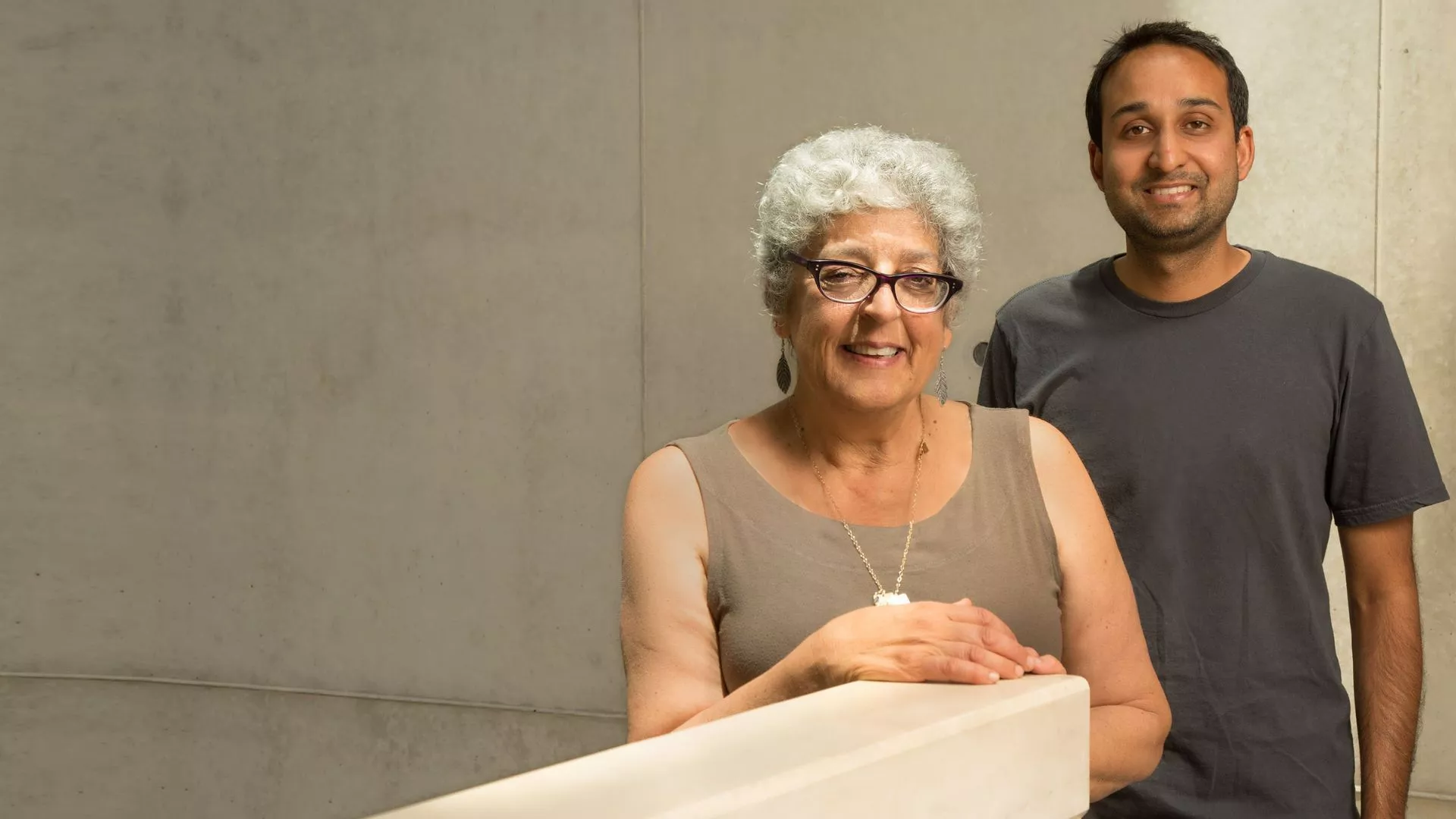Saket Navlakha studies the unique parallels between biology and computer science.
November 2018

Saket Navlakha (right), his colleague Joanne Chory (left) and other Salk scientists found similarities between plant architectures and complex subway systems. (Courtesy Salk Institute for Biological Studies)
Biological systems are highly complex, and we still have only a basic understanding of how they work. To understand the evolution and unique interactions of large biological networks, Saket Navlakha, an assistant professor at Salk Institute for Biological Studies in San Diego, California, is developing new algorithms and studying the “algorithms in nature.” For example, how groups of distributed molecules and cells communicate and process information to collectively solve computational problems. He is working to connect theoretical computer science and systems biology, and develop new ways to learn from biological data. Navlakha is one of the 22 researchers to be named a 2018 Pew Scholar in the Biomedical Sciences in June. Each scholar receives $300,000 (Rs. 220 lakhs approximately) over four years.
Excerpts from an interview.
How did you first become interested in biomedical sciences?
My father was a computer scientist, so that was the path I decided to follow for my undergraduate studies. When I began to take some of the more advanced computer science classes at Cornell University [in Ithaca, New York], my interest really took off. During graduate school, I became especially interested in networks and how different network structures can affect processing. There was one biology class I took that showed me the amazing intersection of networks and biological functions. My professor convinced me that this was going to be a very important area in the near future and that I should get in on the ground floor.
What is your typical process for uncovering a hidden algorithm in nature and what indicators do you look for?
Typically, we notice something that a biological system is doing, which seems interesting in terms of solving a common problem that occurs in many other different contexts. One of the examples we published recently studies the brain and how it does something called a “similarity search.” Every day, the websites you visit and the smartphone apps you use are crunching huge sets of data to find things that resemble each other—products on Amazon similar to your past purchases, songs similar to the tunes you’ve liked and faces similar to the people you’ve identified in photos. All these tasks are known as similarity searches. The ability to match similar items accurately and quickly is an ongoing challenge for computer scientists. We wanted to investigate the neurocircuits in our brains that are responsible for carrying forth this type of computation, and how does this process compare with systems that are being used in computer science.
In your past work, you have compared the brain of fruit flies to search engines, and certain plant architectures to subway systems. What are some of the other unique parallels in biology that you are interested in exploring further?
We are very interested in the immune system. It is an incredibly efficient system that keeps out pathogens and things attacking the body’s well-being. We have been approaching this like a computer security problem—comparing pathogens’ behavior to computer hackers or viruses. How do you detect them? How do you eliminate them? How do you distribute your resources efficiently to run a smooth security system? This process has been going on inside the immune system for thousands of years, so we are looking to learn what optimizations have been made and how we can apply those lessons practically.

Saket Navlakha and other Salk Institute scientists found that plants and subway systems are both networks that strive to make similar tradeoffs between cost and performance. (Courtesy Salk Institute for Biological Studies)
Did being named a Pew Scholar help open new doors for your research?
It’s quite an honor, especially since the award typically goes to more traditional biology honorees. The fact that they are recognizing the more computational angle is indicative of the way the field is shifting. I’m very excited to connect with other Pew Scholars. There is an annual meeting where all past and present winners get together to exchange research and ideas. It’s a very diverse group of people from different fields of biology. So, I’m looking forward to building contacts and collaborations with such a great group of minds.
What new challenges excite you?
For computer scientists, the human brain has always been a thing of awe and beauty. There are things the brain does that no computer can do, while also using only 20 watts of energy, which is amazingly less than that of a light bulb! If we can understand the brain well enough and use those lessons to improve machine learning, it will lead to new ways to solve future computational problems. I’m excited to speed up this convergence between neuroscience and machine learning, and do it in a way that both fields can benefit from each other.
Jason Chiang is a freelance writer based in Silver Lake, Los Angeles.
COMMENTS